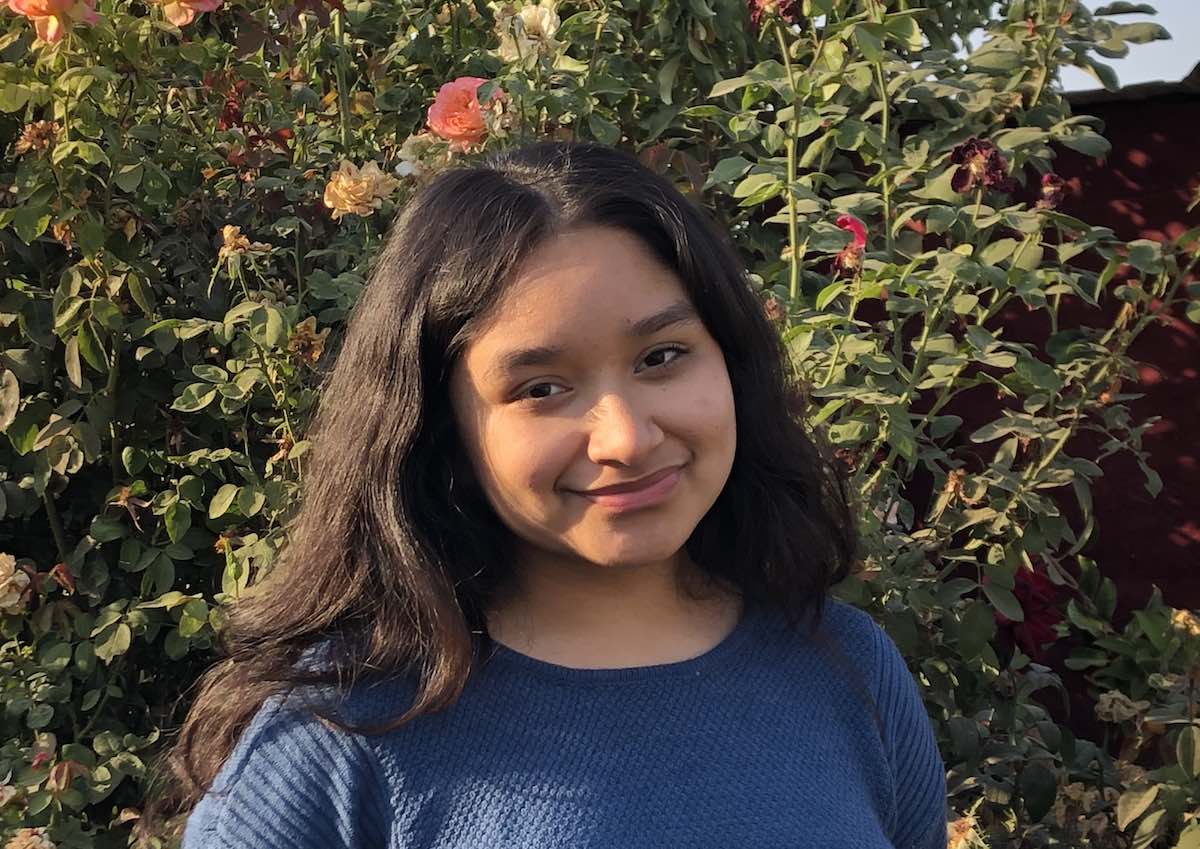 (Photo courtesy of Jacquelin Garcia)
(Photo courtesy of Jacquelin Garcia)
By Jacquelin Garcia
“You have no internet connection.”
These words kept flashing on my screen over and over again. I had a presentation due for school, and my deadline to turn it in was narrowing. I pressed the refresh button, hoping the signal would finally work.
“An error had occurred.”
I threw my phone out of frustration, only to pick it up and try again.
I walked all around my house, hoping to find a small spot to get a connection to turn in my presentation. After what seemed like forever, I eventually found a little corner near the front door of my house. I had to position my phone just the right way in order to get two bars for it to work.
“Submitted.”
When I first started online learning, it was a struggle. I live in the rural community of Tranquility, about 45 minutes west of Fresno, and I don’t have internet access at home. My mom called my high school every day asking if there were hotspots available for me and my two little siblings who are in elementary school. Sadly, there were none available. So, we waited.
Last semester, I wasn’t able to meet virtually with my teachers and used my cell phone to complete all my assignments instead of the Chromebook my high school gave me. There were times I grew anxious thinking about what would happen if one day my phone didn’t provide service either because the connection is sporadic or it just shut down completely.
In larger school districts like nearby Fresno Unified, they have the funds to try and close the digital divide. But in rural communities like Tranquility where I live, closing the digital divide is much more difficult. One solution my school district proposed at the start of the pandemic was to add Wi-Fi to buses and roll them to areas around the community. But even then, they were not reaching every home. Students had to go to the buses to get internet access, but when temperatures reached 100 degrees and as COVID-19 started spreading, it was a problem.
There were times it was frustrating because I didn’t know what was happening in my classes. I turned to my classmates to keep me updated and to teach me the material. My friends and I had to become our own teachers. This routine of me asking my friends went on for about two weeks. We would call each other to go over the material, and they would share their notes with me through Snapchat.
It took about a month and a half after distance learning began for us to receive our hot spot. We finally had a good, stable connection for school.
We all have had trouble adapting to a virtual learning environment. I missed out on nearly two months of lectures and was faced with falling behind because of the lack of resources in my community. It’s easy to lose motivation, but despite the digital barriers I faced, I am proud of myself for staying on top and never missing any assignments.
My education has always been very important to me. Being the eldest daughter of farmer immigrant parents, they push me to take my studies seriously and to never give up no matter the circumstances. This gave me the mindset to keep going even in a pandemic.
I’m a senior and my current goal is to pursue a bachelor’s degree in psychology when I start college next fall. I want to provide my community with better mental health access and resources. I didn’t let myself fall behind when I didn’t have an internet connection, and I am certainly not going to fall behind now that I do.
This story was produced by The kNOw and is part of a collaborative project “Behind Our Masks” that includes content from young journalists from YR Media, Boyle Heights Beat, The kNOw and Coachella Unincorporated.
From education, to family, to employment, the pandemic has deeply impacted the younger generation, particularly young people of color. Click here for more stories on how they’re trying to cope.